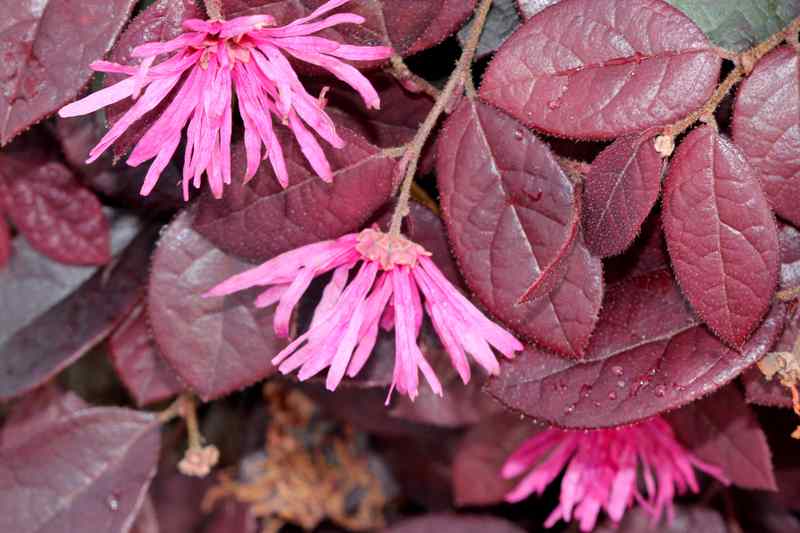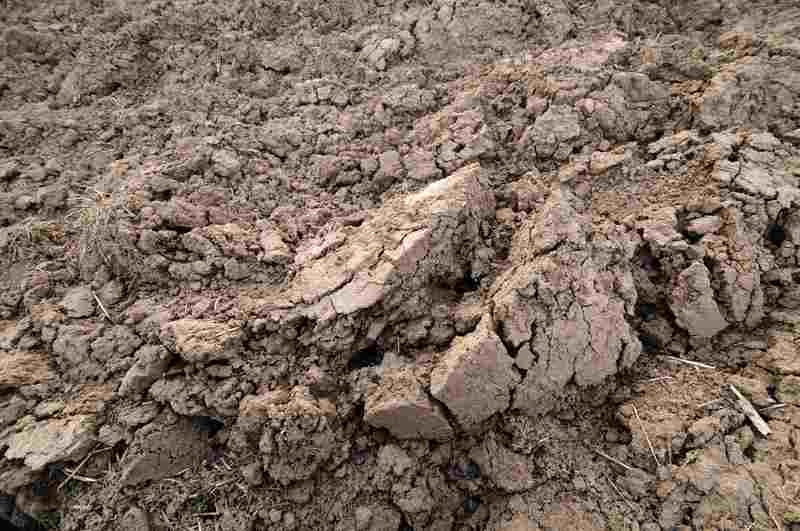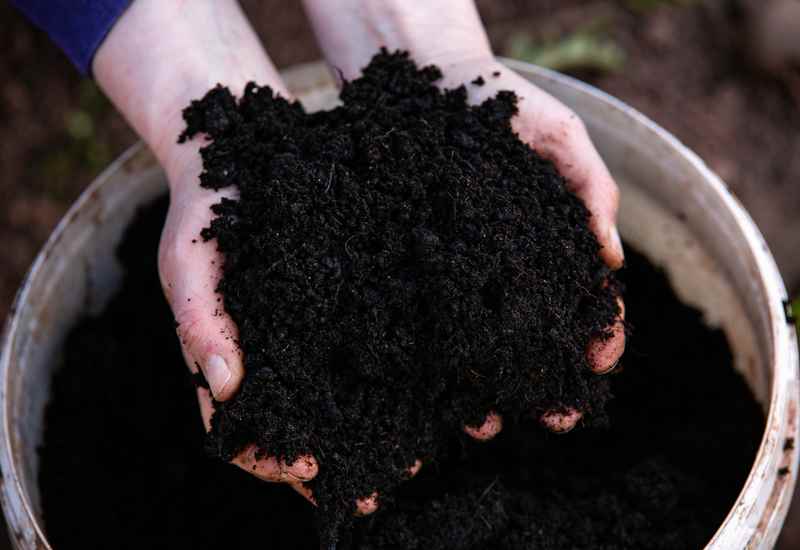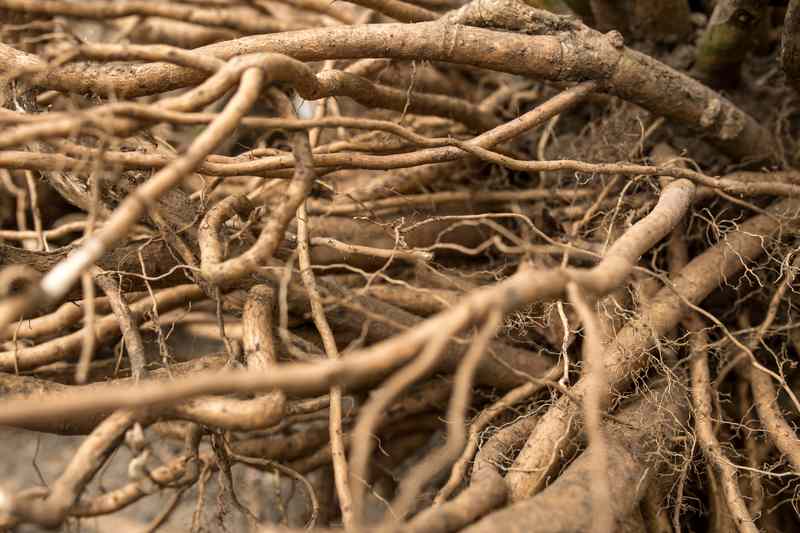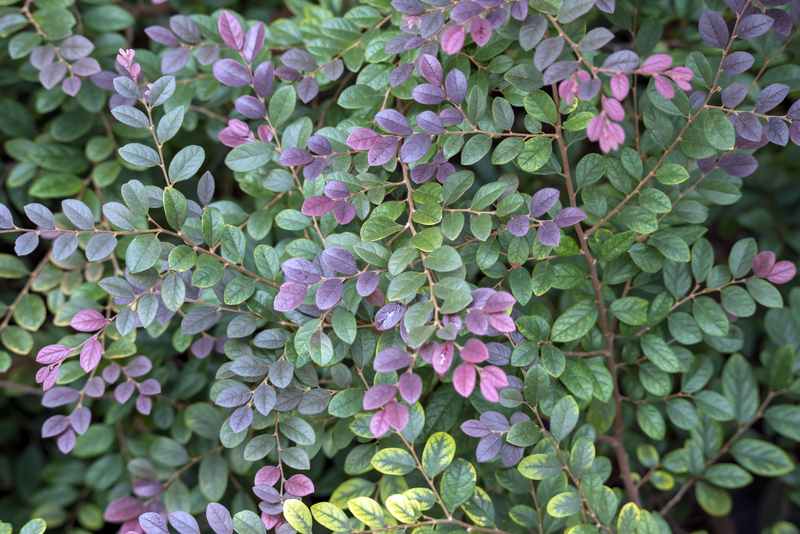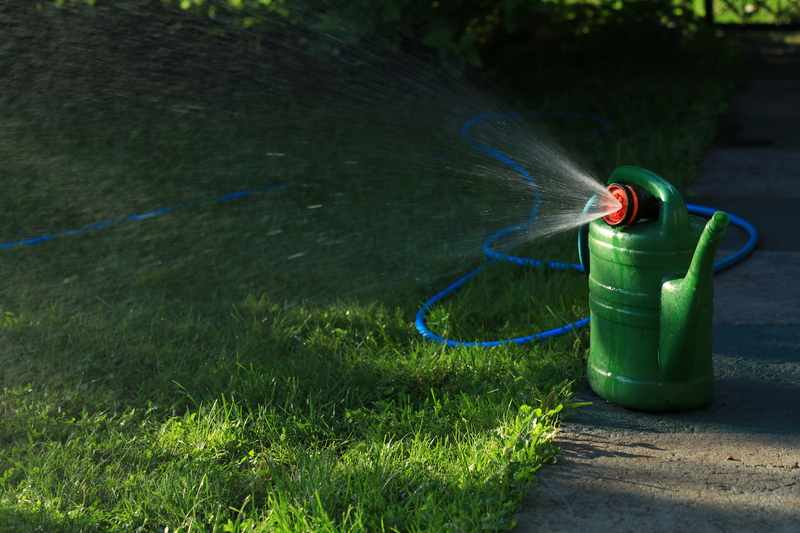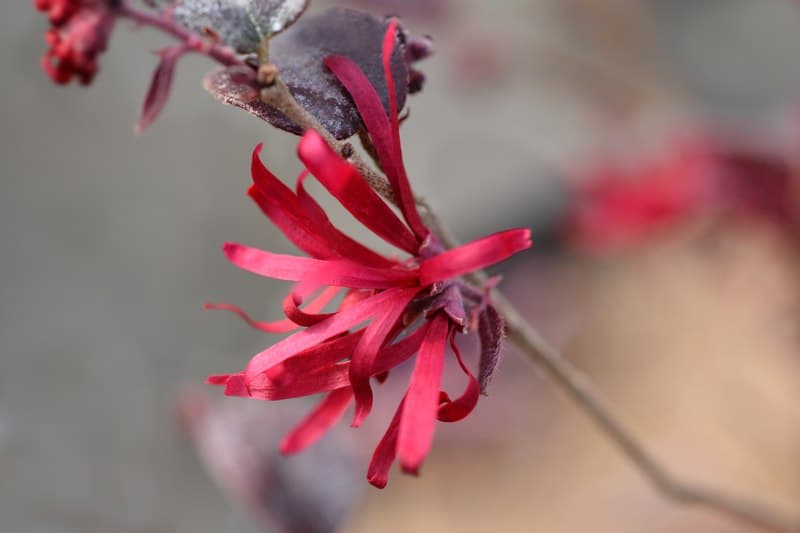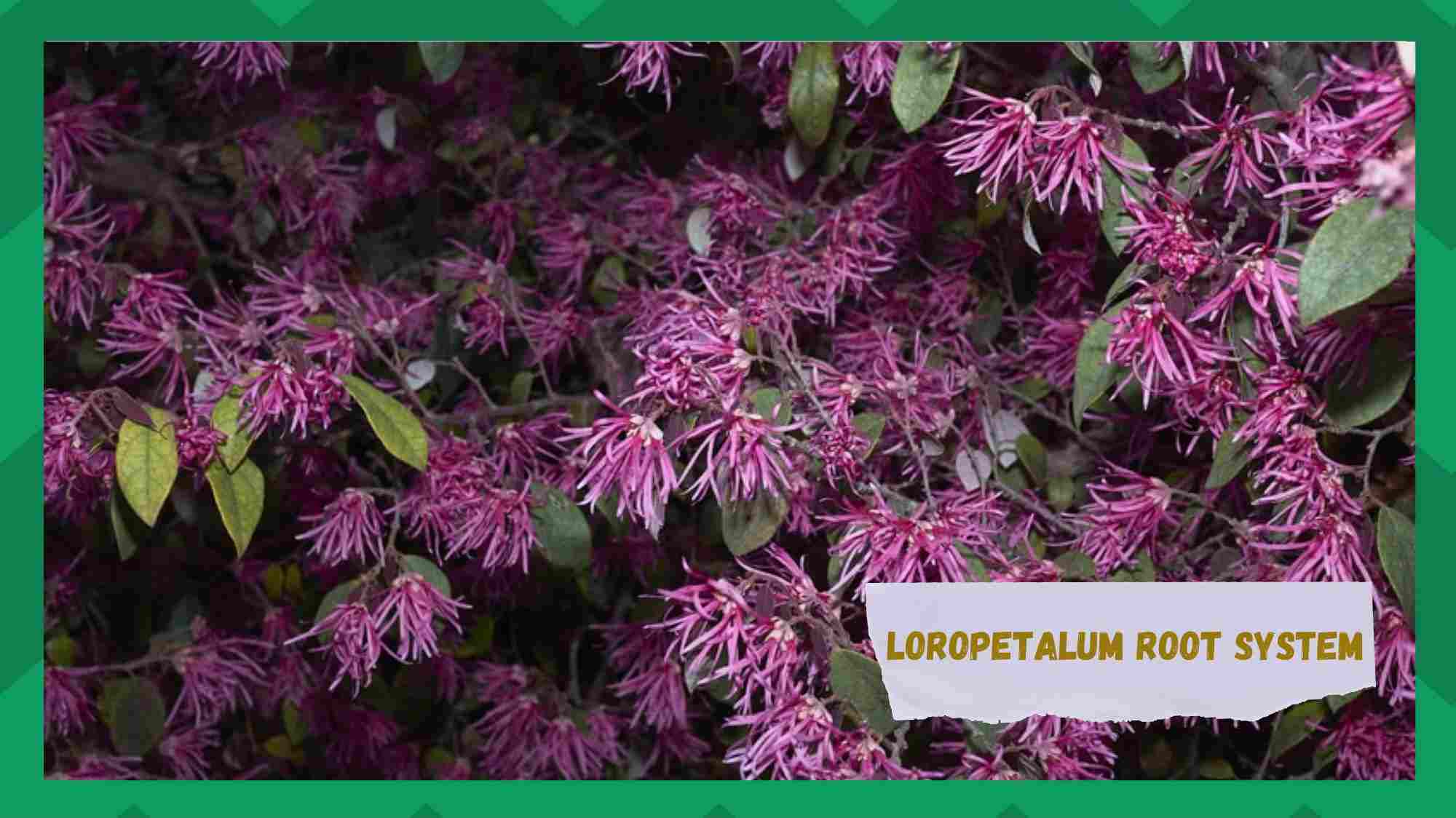
Loropetalum is a plant genus with three species that are all in the witch hazel family, Hamamelidaceae. Loropetalum comes from the Greek terms loron and petalon, which mean “strap leaf,” and so describe the plant’s appearance.
Although they are native to places like Japan, China, and Southeast Asia, you may find these plants in other regions of the world as well. Some species are evergreen flowering shrubs, and others are small flowering trees.
The shrubs that bear the magnificent yet low-maintenance loropetalum blooms are respected for their resilience and beauty. With comparable light, soil, and moisture requirements, these witch hazel shrub cousins share similar fringe-like blossoms.
Not only are these Chinese fringe flowers beautiful, but they make excellent privacy shrubs and sculpture plants as well.
Loropetalum – All You Need To Know
Loropetalum flowers are regarded as low-maintenance, resilient, yet attractive shrubs. With comparable light, soil, and moisture requirements, these witch hazel shrub cousins share similar fringe-like blossoms.
You may use these Chinese fringe flowers as hedges or topiaries, and they’ll still provide you with plenty of concealment.
- Lighting
Plant Loropetalum bulbs in a spot that gets partial shade during the day. These shrubs thrive in partial shade during the heat of the day but need partial early light. They are adaptable enough to flourish in either full sun or partial shade.
- Soil
In terms of soil, the loropetalum flower prefers acidic, loamy soil that drains well. The optimal range for pH is 4.5 to 6.5. Mulch a flowering Loropetalum shrub with 2 to 3 inches of compost, straw, or seasoned wood chips to help it retain moisture and prevent weeds.
- Water
The heat of summer calls for hot watering of young plants. Shrubs need around 2 inches of water per week, so plan accordingly. Loropetalum flowers, once grown, can withstand dry conditions better than many others. Nonetheless, they flourish in persistently damp soil.
- Temperature & Humidity
Climate-wise, loropetalum flowers do best in USDA hardiness zones 7 to 10, where they can endure winter lows of 0 degrees Fahrenheit without suffering significant damage (-17.8 degrees Celsius).
Loropetalum flowers are beautiful, but they need to be grown in a sheltered spot in locations where the winters become really harsh.
- Fertilizer
At the time of planting, incorporate compost into the soil. The compost will serve as a slow-release fertilizer and also help the soil drain better.
The loropetalum shrub, which is prone to root rot, will benefit greatly from this. 1 For the same reason, don’t bury any part of the root ball beneath the soil’s surface when you plant the shrub.
Once loropetalum flowers get established in good soil, they seldom need any more fertilizer.
Fertilizing established plants once a year in early spring with a slow-release, all-purpose fertiliser or one that is particularly developed for shrubs might help them thrive if desired. Amounts should be used in accordance with label directions.
These Chinese fringe flowers need supplementary feeding if they are planted in nutrient-poor soil. Add compost, grass clippings, leaf mulch, and manure to the soil on a consistent basis (composted).
Loropetalum Root System: What You Need To Know
This incredible plant comes in a variety of species from you can pick. Availability of different Loropetalum varieties varies greatly by location. Although Loropetalums are simple to plant, one typical complaint is that their roots spread out too much.
In this case, you need to know how its root system works. Experiencing the Loropetalum root system is the best way to determine if its roots are invasive.
The first thing to keep in mind while trying to figure out the Loropetalum root system is that the plant is quite diverse in terms of species. Given that its root system and other properties might change depending on its species, it’s important to identify the plant you’re dealing with.
In any case, most common Loropetalum plants are noninvasive and harmless. This implies that fresh vegetation may be planted along the Loropetalum with no difficulty.
Since the plant is not poisonous, it is more likely to be attacked by wildlife; however, this may be prevented with the use of sprays or by switching to a plant that is resistant to the most prevalent types of wildlife.
This can help you protect your Loropetalum from attacks by establishing a barrier around it. When it comes to the plant’s roots, remember that their maximum size is between 9 and 19 inches.
This is quite low, making it simple for individuals to sever the plant’s root and stop its expansion. If you know how the plant multiplies, you can stop its growth.
In light of the foregoing, remember that some species of Loropetalum are also invasive. The Purple Diamond Loropetalum is one of the most widely-used specimens.
People can’t grow anything else there because it may invade so deeply. In light of this, it’s wise to identify the specific Loropetalum variety you intend to cultivate before investing time and energy into the process.
Because of variations in regional temperatures, several of these alternatives are already off the table. Although Loropetalum can tolerate modest shade, doing so will still cause the leaves to fade in appearance.
This is why it’s important to maintain a sunny location for your shrubs. This being said, a Loropetalum plant may not be able to survive in locations with consistently low temperatures since it has to be kept warm.
Loropetalum Root System: Some Tips For Growing Loropetalum
Gardeners were also surprised to learn how easy it is to grow Loropetalum. Its native habitat is wooded areas with moist, somewhat acidic, well-drained soil; yet, it has shown to be exceedingly hardy, flourishing in full sun to forest shade, and average garden soil.
It grows in USDA plant hardiness zones 7–9 across the country and in zone 10 in California, thanks to the state’s drier summers, but not in zone 9–the norm for southern Florida. It wouldn’t work there because of the sticky summers.
Even though this plant needs some afternoon shade to thrive in zones 9 and 10, it is astonishingly drought-resistant and relatively low maintenance, with no significant pests or illnesses.
Of course, the standard caution with drought tolerance applies; you’ll need to give your new plant at least one growth season of TLC and regular watering (once a week or more frequently in a sunny location) before it demonstrates any signs of resilience to dry conditions.
Your new Loropetalum Fringe Flower will do best in woodland gardens or under the shade of deciduous trees.
Their organic shape is a perfect match, and they provide a welcome splash of colour. Carefully examine your variety selection if you desire red leaves and want to plant in shade, since certain varieties tend to lose their colour in the summer.
he reason the Loropetalum variety known as Ever Red is so well-liked is because it retains its deep maroon colour no matter the time of year or how much direct shade it receives.
Typically, basic evergreens are used in the home, and they are kept neatly cut. Plants like the Loropetalum would look great there since their leaves stands out against the deep greens and their looser growth style provides a nice contrast to the smoother shapes.
The addition of that splash of colour to your foundation planting will take it to a whole new level that you will like, and it won’t take any further effort from you.
Larger planter boxes and tubs are also ideal environments for Fringe Flowers. You won’t need to add any more plants to your garden since these vibrant flowers will last for years with proper care, including watering and fertilizer.
Because of the potential for root damage in zones of zone 7 with colder winter lows, these plants may not be ideal for those areas, but they will thrive everywhere else.
The Bottom Line
Loropetalum Chinense flowers are a must-have for every gardeners’s collection due to their attractive look and wide availability of varieties. As long as their fundamental needs are met, they are simple to cultivate and may thrive in practically any environment.
The time and effort you put into caring for these plants will be well worth it, and you will get a life-time campanion in your garden!

